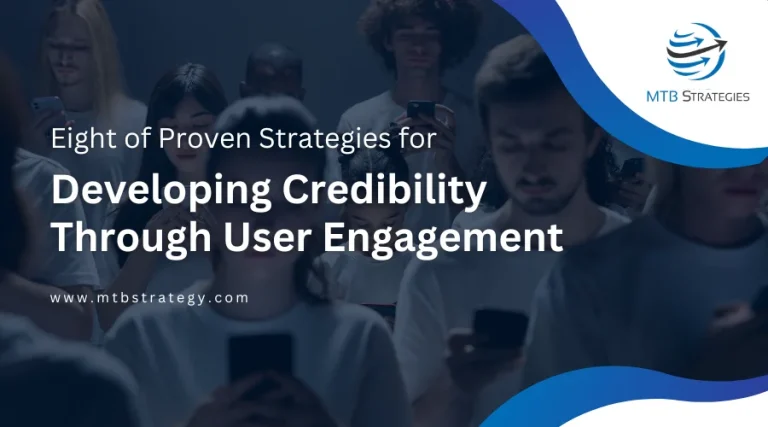Are you caught up in the never-ending SEO vs. PPC debate? You’re not alone. CMOS for global brands are constantly battling to find the optimal synergy between their SEO and PPC strategies to maximize marketing ROI.
Your company already uses search engine optimization (SEO) and spends a lot of money on pay-per-click (PPC) advertising (PPC). You like what SEO does for your brand because it allows you to capitalize on organic search cost-effectively. On the other hand, you want the fact that PPC generates results as soon as you deploy ads.
Benefits & Drawbacks of SEO
SEO strategies and tactics are used to make your website as search-engine-friendly as possible. A well-executed SEO program raises your website’s ranking in organic search results for a set of strategically chosen queries.
When a user searches for a phrase in Google, it is Google’s responsibility to return the most useful, relevant, and trustworthy results. It is your responsibility as an SEO strategist to ensure that your content appears in Google’s top 10 results for those queries.
When done correctly, SEO positions your brand in front of searchers at every stage of the customer journey. As a result, consumers and businesses will regard you as a reliable and familiar resource.
SEO Benefits
Exceptionally Profitable
What happens when you compare organic search results to paid search results? SEO is sure to become one of the most profitable in your marketing plans, dollar for dollar. It is far more beneficial in the long run than PPC.
Furthermore, search engine optimization lowers your customer acquisition costs over time because organic search investments compound in value.
Extremely Scalable
SEO scales to deliver compounded results at a low cost. For example, adequately optimized URL structures can help boost your existing web pages and future content without extra effort.
Always Active
SEO marketing is different because organic search rankings help boost your company’s website 24 hours a day, seven days a week. There is no need to add advertising spend or set up dayparting. Your organic search engine results will constantly promote your brand.
Yields Long-Term Benefits
Your brand benefits when your SEO efforts result in high visibility in organic search results. In the long run, positive organic search visibility exponentially increases the ROI from your SEO investments over months and years.
Equivalent to Positive Branding
People will regard you as a serious player in the industry if you dominate Google searches. Indeed, simply having your listings on the first page of Google is a clear sign of trust in the eyes of your audience.
Takes Up More Space in SERPs
If your content is optimized correctly, one page can occupy multiple spots in the search result pages. You could have a third seat on page one if you optimize for the People also ask section (PAA).
Allows for Multiple Customer Touchpoints Within a Funnel
Do you want to influence customer touchpoints at the start of their journey? Then, focus on research-related topics and long-tail keywords. If you also optimize for middle-of-funnel terms, your brand will appear when your target audience’s options are narrowed. Finally, the funnel’s bottom SEO allows you to influence the buyer’s final decision (think ROI calculators).
Highlights Your Brand’s Creativity
You can tap into your team’s creativity with organic search results to gain an advantage over the competition. Write long blog posts, publish custom research reports, design infographics, or create a new video series to earn your brand more real estate in organic search results.
SEO Drawbacks
Take Time to Implement
There is no way around it. Good SEO requires effort, and results take time to appear. The main point of the SEO vs. PPC debate is as follows: PPC returns are immediate, but they disappear if you don’t pay; SEO takes time, but you’ll see ROI after your long investment, and those results can sometimes last for years.
How long does it take to see results? Various factors determine this, including the strength of your domain and your SEO strategy. However, it usually takes at least six months to see results from SEO.
Google Algorithm is Dynamic
You may need to change certain areas of your SEO program as the algorithm changes. Instead of setting and forgetting it, you should track performance over time and optimize accordingly.
Benefits & Drawbacks of PPC
Whereas SEO is ranking organically in search results, pay-per-click advertising (PPC) using Google Adwords is paying to be at the top of the search result pages allotted to ads.
With PPC, you have complete control over the links and everything related to the search results page. Because paid search marketing is an auction, there is no guarantee that your ads will appear, but you have more control over your campaign than with SEO.
PPC activities, like SEO, include keyword research and competitive analysis. Account architecture, campaign management, and bid management are also available. Remember about ad copy, landing page development, testing, and other considerations.
Because PPC is highly data-driven, it’s critical for a PPC specialist to keep a close eye on performance, constantly refining keyword and messaging strategy and striving to increase conversion rates while lowering the average cost per click (CPC).
PPC Benefits
Almost Immediate Results
It still takes time to conduct preliminary research and launch a new advertisement campaign. But as promised, the results you’ll see with PPC are quick and straightforward once you throw them.
Whatever happens in the long run, there are practical reasons to consider the short-term results of paid searches. You could promote a new product, prepare for something seasonal, or run a sale or promotion. Consider taking up more space in the Google SERPs. You may want some quick exposure while you wait for your long-term SEO efforts to pay off.
Simplified Information
If your company is data-driven, you’ll feel right at home with PPC. You’ll clearly understand your PPC campaign’s ROI because of the quick appearance of the results and specific categorization.
PPC data is more straightforward, but Google is more transparent with PPC data than SEO data. Google tends to reward its paying customers with helpful information that they can use to run a successful campaign.
Behavioral Marketing for Audience Targeting
Do you want to target specific email addresses or audiences? Would you like to retarget users who conduct specific searches using behavioral marketing? You can target URLs for websites, apps, or YouTube videos relevant to your target audience’s interests. All of this is possible if you use PPC.
If you want to run campaigns to target specific geographic locations, PPC is the way to go. You can display certain ads in one place while simultaneously displaying other ads on another site. Do you want to run 50 different campaigns in 50 different locations? That is not a problem with PPC.
PPC Drawbacks
No Money, No ROI
Paid ads will be delivered. So while you can start and see results immediately, your traffic will vanish as soon as you stop. If you need to reduce your budget or stop paying, your business will suffer the immediate consequences of losing conversion traffic.
Conversely, SEO behaves more like a large rock on a downhill slope: it requires some force to move, but it continues to roll long after you stop pushing.
Big Financial Investment
PPC requires a significant investment in advertising. No money to spend? There are no advertisements and no results. Furthermore, CPCs have been rising for years, which means that even generating a click now requires a higher investment than in the past.
PPC is a constant fine-tuning process in which your specialists test bids, ad copy, keywords, landing pages, other settings, and the like until they find the sweet spot. You can’t expect excellent ROI and will likely lose money on failed experimental campaigns. It’s all part of the typical PPC process, but it’s one of the reasons why this method costs more than you might think.
Increased Cost Per Customer Acquisition
Customer acquisition campaigns using PPC have a high cost. Many large corporations spend six to seven figures per month on PPC, which results in relatively high acquisition costs.
It’s Difficult to Avoid ‘Banner Blindness’
Banner blindness is a condition in which people ignore advertisements.
Many online searchers have grown accustomed to ads, having spent years seeing them and developing the habit of neglecting them in favor of more valuable information on the page.
This also impacts search results, with eye-tracking studies revealing that most people bypass the paid results at the top of the SERPs in favor of the organic results. It can be challenging to prioritize PPC in your online marketing strategy only to discover that most of your target audience ignores ads.
SEO ROI vs. PPC ROI
We’ve seen that SEO click-through rates are higher than PPC click-through rates, implying that it has the potential to drive significantly more organic traffic your way. Furthermore, your cost per acquisition (CPA) will be much lower with SEO than with PPC.
So, if you spend six or seven figures per month on paid search, learning how to improve SEO results will significantly benefit your bottom line. Consider this: if you spend a million dollars per month on paid search, it is possible to reduce your CPA by 60%, 70%, or even more than 80% by dominating organic search while reducing your PPC spend.
If you are not vital in SEO today, you can still plan on gradually increasing your reliance on SEO. As your organic performance improves, it will become more profitable for you to focus more on SEO and rely less and less on paid searches. This phased process may take some time, but it will be more profitable than sticking with essentially paid search allocations because PPC is a known quantity or because “that’s what you’ve always done.”
To maximize the ROI of your SEO efforts, you should engage in Enterprise SEO throughout the entire funnel, capturing those who are interested in the product or service category but are still in the early research phase, all the way down to those who are ready to make a purchase decision right now.
Which is More Effective for My Brand?
You’ve come this far and want to know who the ultimate winner is. “Why not create an SEO and PPC synergy?” is the best answer for many businesses.
Integrating SEO and PPC allows you to take up more space on Google’s SERP. This way, PPC and SEO complement each other to reduce competition and create a stronger brand impression. As a result, by combining both strategies, you can maximize your marketing ROI.
SEO is the better option for long-term traffic, conversions, and ROI, and because of the compounding effect, the better you get at SEO, the more benefits you’ll see. Organic search also includes web pages, blog posts, videos, podcasts, infographics, presentations, reports, and other forms of content marketing. This allows your team to be more creative and effectively showcase your brand differentiation and personality than PPC.
That is not to say that PPC does not have a place. Paid search is a better option for a short-term promotion or when you need immediate results for a specific area, for example.
You can choose between SEO and PPC. Instead, weigh their benefits and drawbacks to find the best mix for your marketing objectives. You will achieve both short-term and long-term ROI if you do this.






